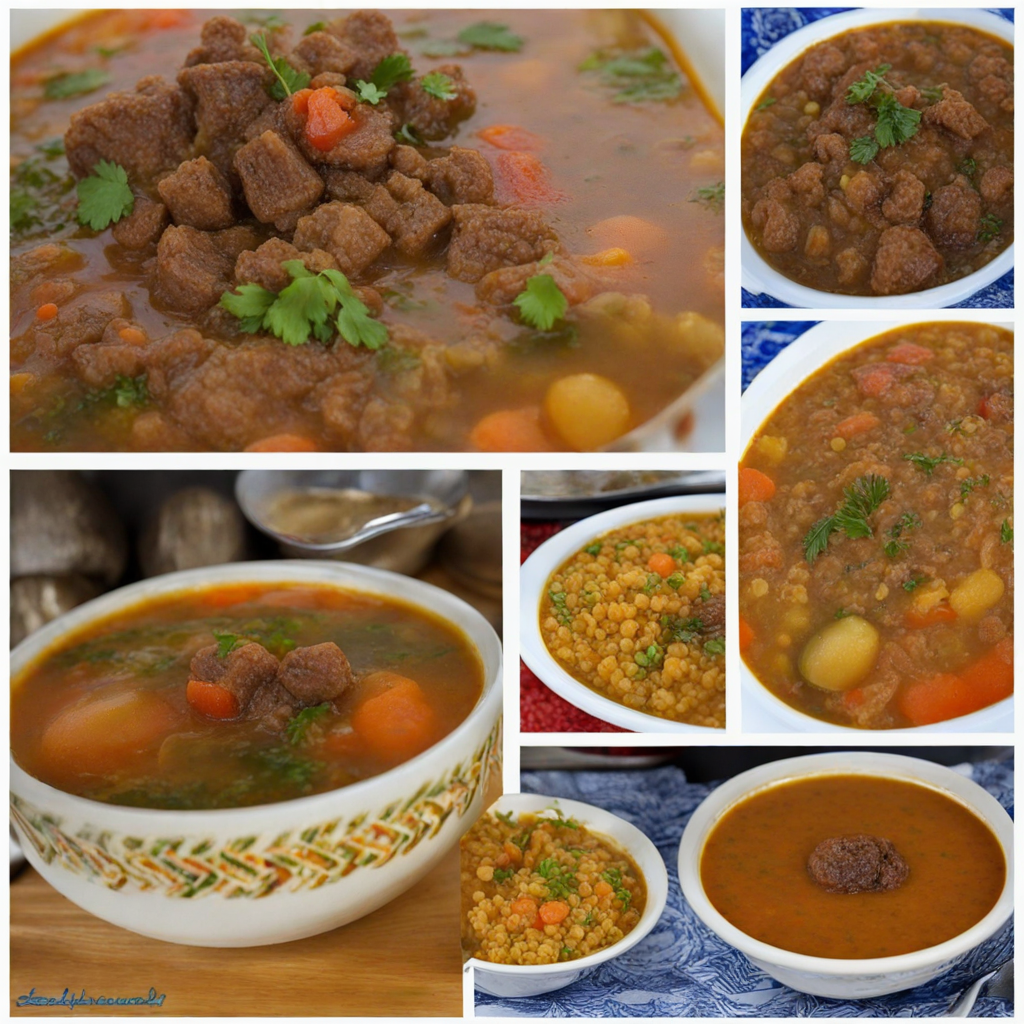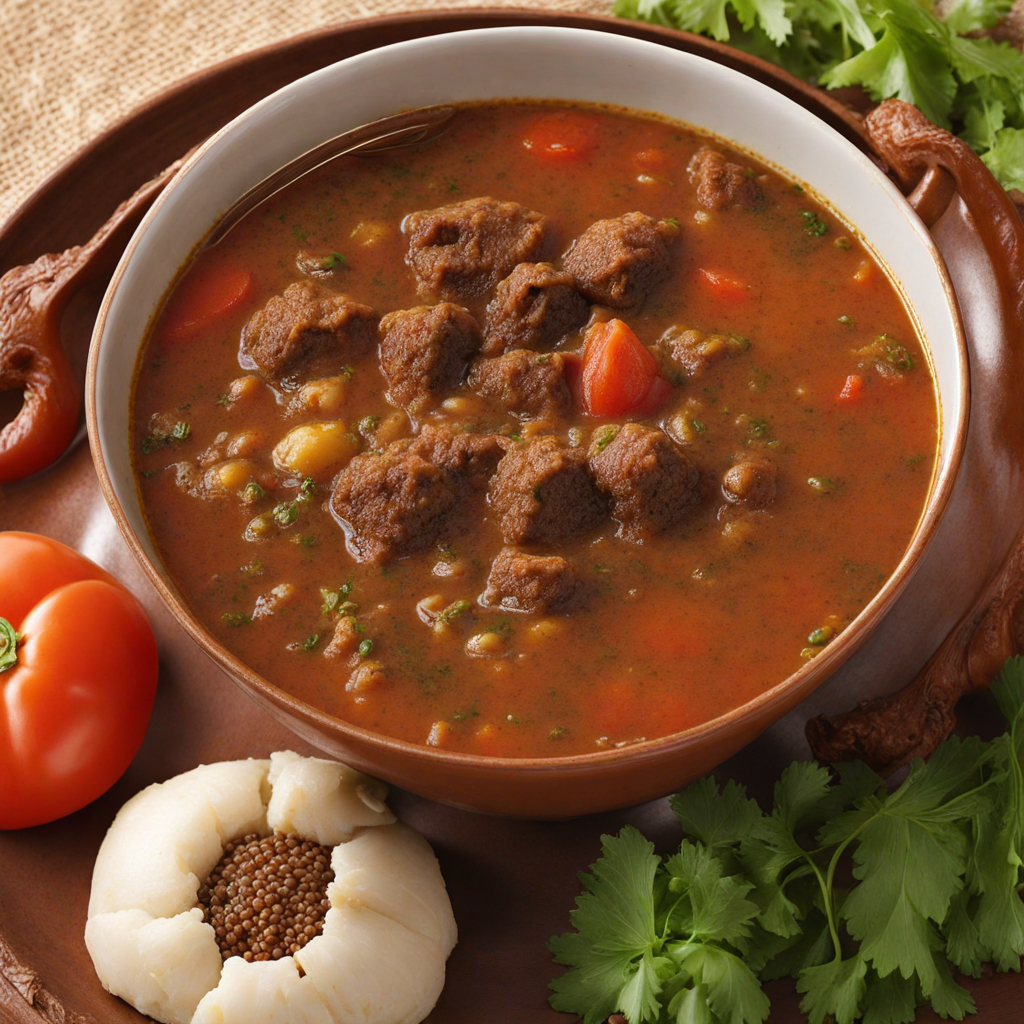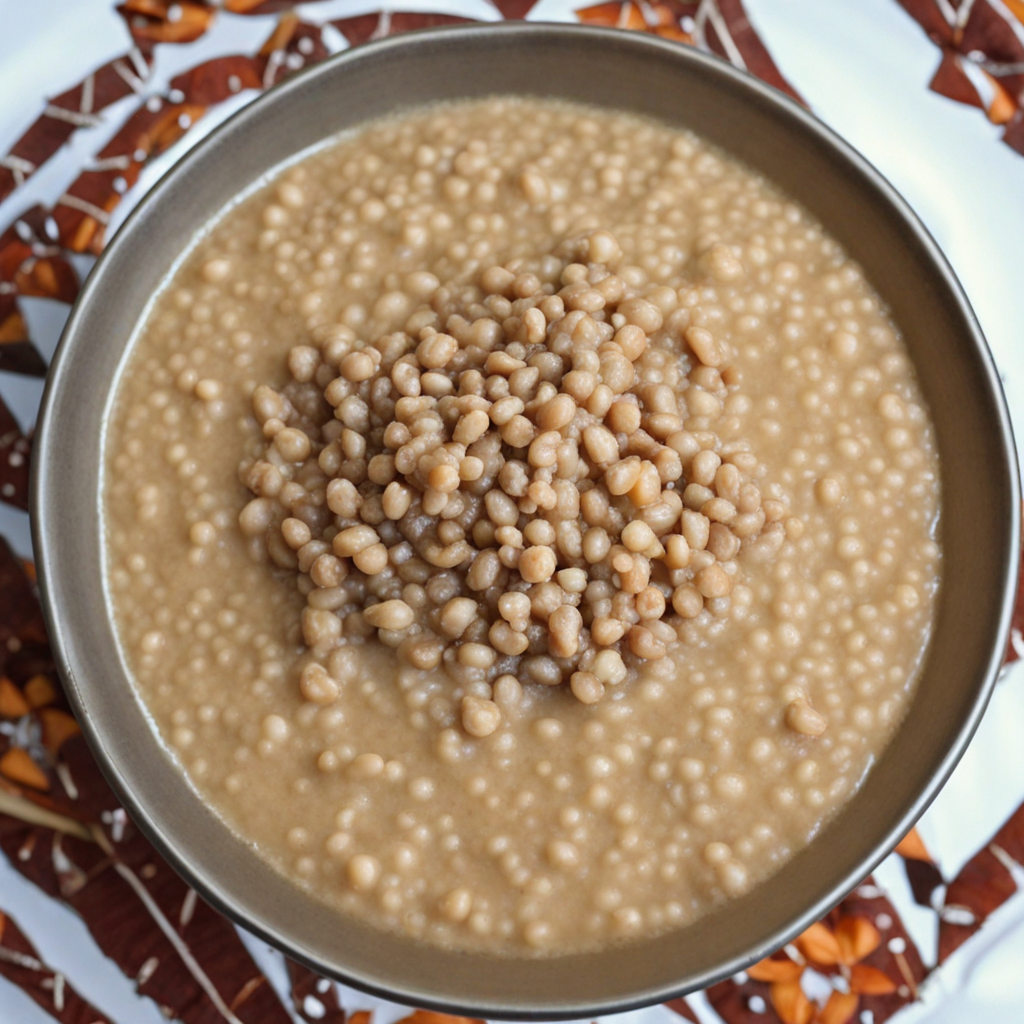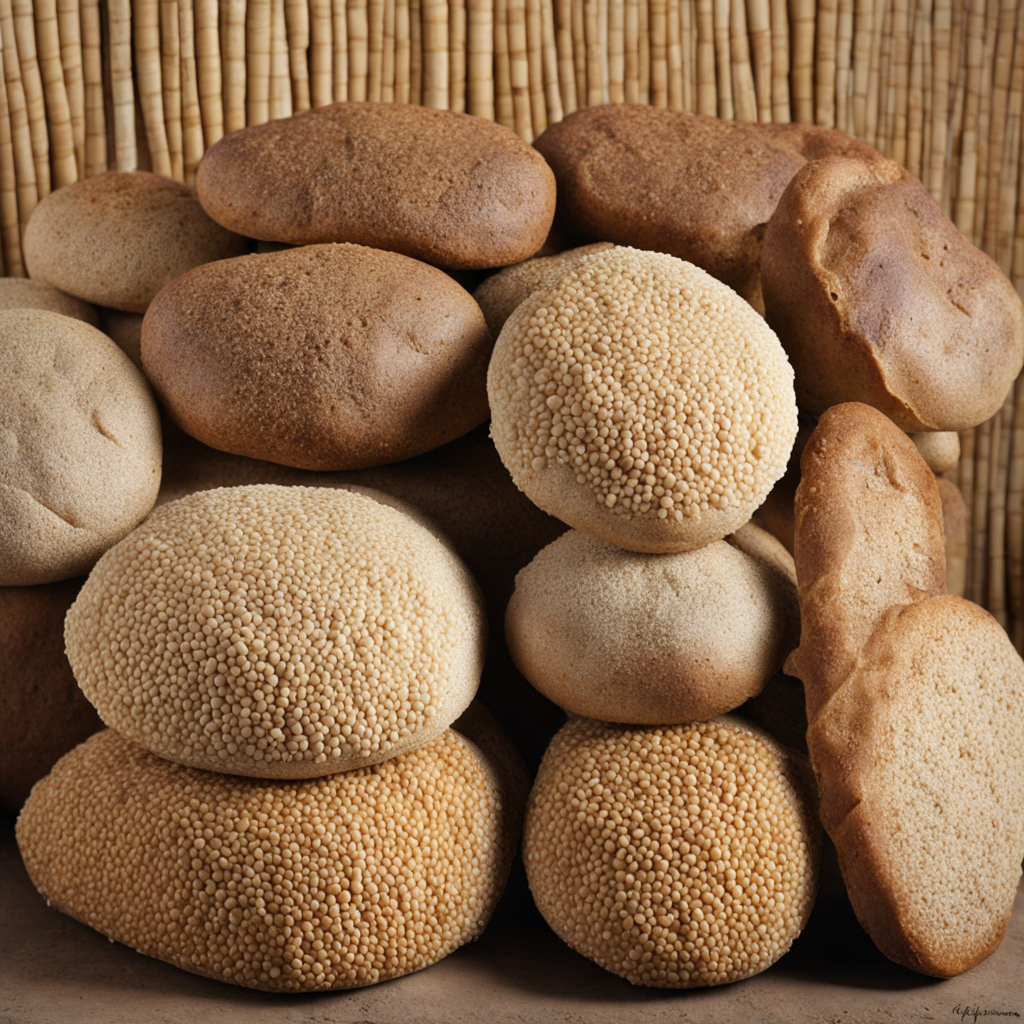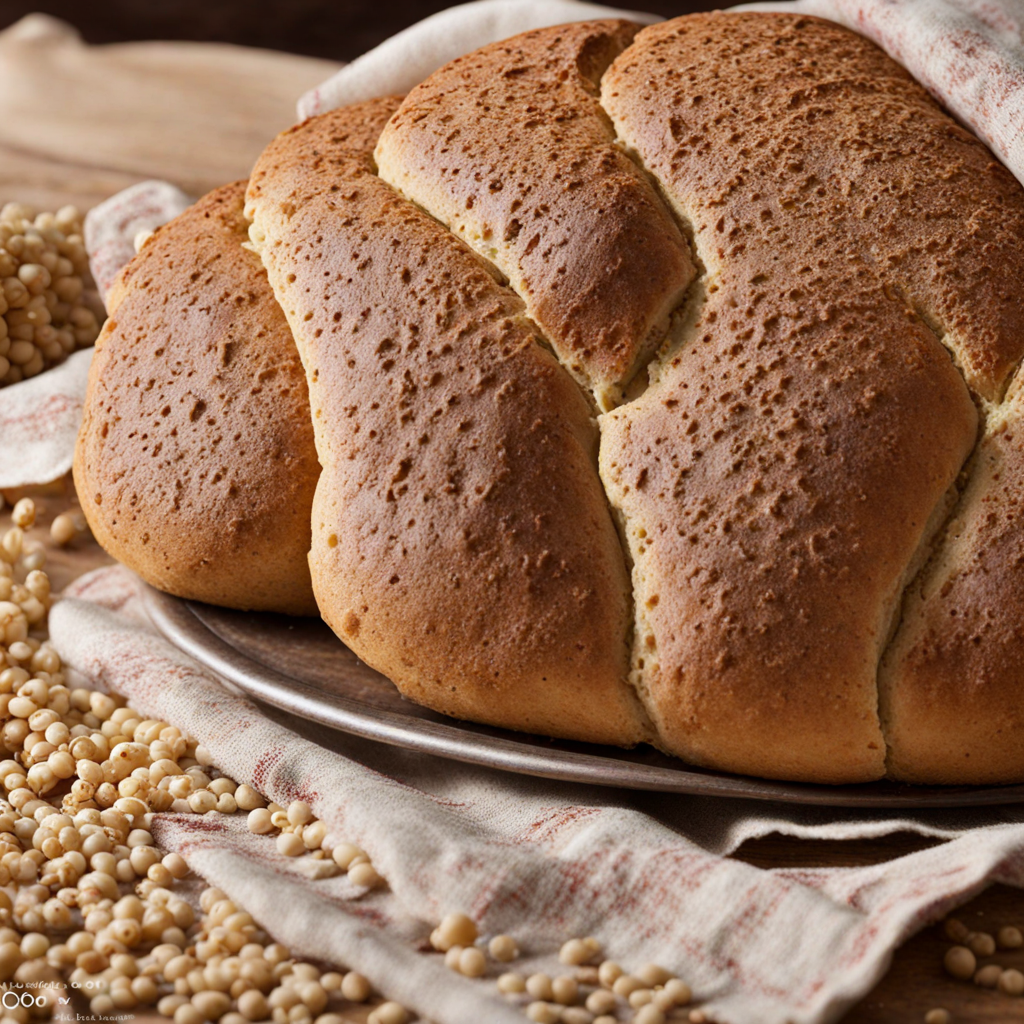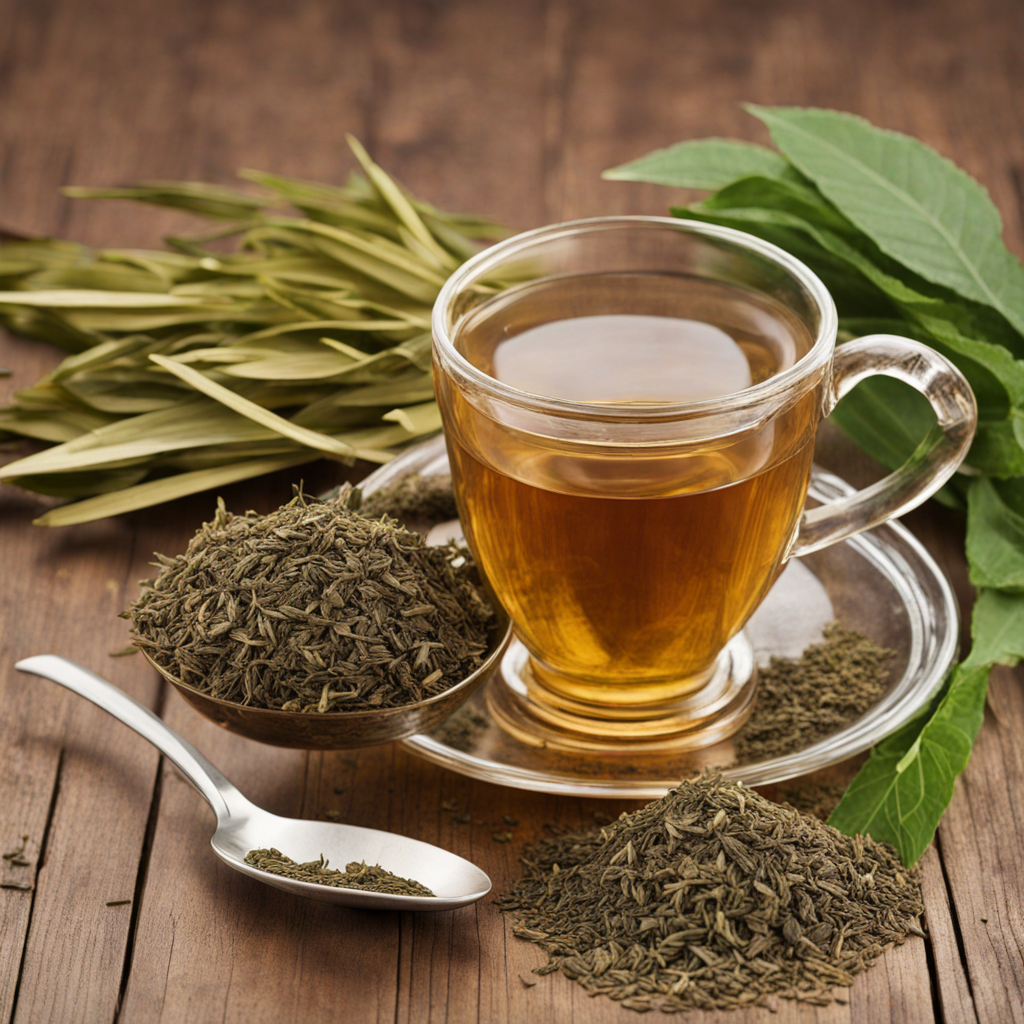Shorba
Shorba, a beloved dish in Sudanese cuisine, is a hearty and flavorful soup that embodies the rich agricultural heritage of the region. Typically made with a base of meat, such as lamb or chicken, it is combined with an array of fresh vegetables and legumes like lentils and chickpeas, creating a nourishing and fulfilling meal. The broth is delicately seasoned with an assortment of spices, including cumin, coriander, and black pepper, which infuse the dish with warmth and depth. The use of local ingredients, such as tomatoes and onions, enhances the natural flavors, making each bowl a comforting experience. The texture of Shorba is both creamy and robust, often achieved by blending some of the cooked ingredients into a smooth consistency while leaving chunks of meat and vegetables intact. This balance of textures makes it immensely satisfying, perfect for dipping traditional Sudanese bread, known as 'kisra.' The bread, made from fermented sorghum or wheat, complements the soup's richness and allows for a delightful culinary interaction, as diners scoop up the Shorba with pieces of bread. The communal aspect of enjoying Shorba with family and friends adds to its charm, making it a staple at gatherings and celebrations. In addition to its comforting flavors, Shorba is often enriched with the addition of fresh herbs like cilantro and parsley, providing a refreshing contrast to the savory elements. This dish not only showcases the Sudanese culture but also reflects the warmth and hospitality of its people. For those seeking to explore new tastes, Shorba offers a unique blend of spices and textures that transports the palate to the heart of Sudan, inviting food lovers to savor every spoonful and appreciate the culinary traditions of this vibrant country.
How It Became This Dish
The History of شوربة (Shorba) in Sudan #### Origins The roots of شوربة (Shorba) can be traced back to the rich and diverse culinary traditions of the Arab world and North Africa. The word "Shorba" itself is derived from the Arabic verb "شرب" (sharba), meaning "to drink." This etymology reflects the dish's essence as a soup—a liquid food that is both nourishing and hydrating. In Sudan, Shorba is a beloved staple that has evolved over centuries, influenced by a confluence of cultures and ingredients. Historically, Sudan's geographical position made it a melting pot of cultures. The region has been inhabited by various ethnic groups, including Nubians, Arabs, and other indigenous tribes. This cultural amalgamation has greatly influenced Sudanese cuisine, with Shorba standing as a prime example of this rich culinary tapestry. The dish is not only a product of local ingredients but also a reflection of the country's history of trade, migration, and cultural exchanges. #### Ingredients and Variations Shorba in Sudan is characterized by its hearty composition, typically featuring meat (often lamb or chicken), vegetables, and a variety of spices. Common vegetables include carrots, potatoes, and tomatoes, which are simmered to create a rich broth. Spices such as cumin, coriander, and cinnamon infuse the soup with warmth and depth, while fresh herbs like cilantro or parsley add brightness. While the basic components of Shorba remain consistent, regional variations abound. In urban areas like Khartoum, Shorba may incorporate ingredients sourced from international markets, such as bell peppers or zucchini, reflecting the globalization of Sudanese cuisine. In contrast, rural recipes may rely heavily on locally sourced ingredients, showcasing the traditional farming practices and seasonal produce of the region. #### Cultural Significance Shorba holds a significant place in Sudanese culture, serving not only as a nourishing dish but also as a symbol of hospitality and community. It is commonly served during family gatherings, celebrations, and religious observances, notably during Ramadan. The act of breaking the fast with a warm bowl of Shorba is a cherished tradition that brings families together, creating a sense of belonging and shared identity. In Sudanese households, the preparation of Shorba often involves multiple generations working together. Elders pass down their knowledge of spices and cooking techniques to younger family members, ensuring that the cultural heritage is preserved. This intergenerational exchange not only fosters familial bonds but also reinforces the communal aspect of food preparation and consumption. Moreover, Shorba is often associated with social gatherings and festive occasions. It is a common dish served at weddings and other significant events, where large quantities are prepared to accommodate many guests. The communal nature of sharing Shorba among family and friends epitomizes the Sudanese value of generosity, making it much more than just a meal; it is an experience that fosters connection and togetherness. #### Development Over Time As Sudan has faced various challenges, including political upheaval and economic fluctuations, the evolution of Shorba reflects both resilience and adaptability. During periods of conflict, traditional recipes may have been altered due to scarcity of certain ingredients. In such cases, families often relied on creative substitutions, utilizing what was available to them. This adaptability ensured that Shorba remained a staple in the Sudanese diet, even in the face of adversity. In recent years, there has also been a resurgence of interest in traditional Sudanese cuisine, including Shorba, as younger generations seek to reconnect with their cultural roots. Cookbooks, food blogs, and social media platforms have played a crucial role in revitalizing interest in traditional dishes. Home cooks and chefs alike are experimenting with new twists on classic recipes, incorporating modern techniques while respecting the essence of Shorba. This revival of interest in Shorba has also led to its recognition on the international culinary stage. As Sudanese cuisine gains visibility, Shorba has found its way into restaurants and food festivals around the world, introducing global audiences to its rich flavors and cultural significance. This newfound appreciation for Shorba not only highlights the dish's culinary merits but also serves as a vehicle for cultural exchange and understanding. #### Contemporary Context Today, Shorba continues to be a beloved dish in Sudan and among the Sudanese diaspora. Its preparation and consumption remain rooted in tradition, yet it is also evolving to reflect contemporary tastes and lifestyles. In urban centers, where fast-paced living often prevails, Shorba is sometimes prepared in quicker, more convenient forms, such as pre-packaged mixes. However, the essence of the dish—its ability to bring people together—remains unchanged. In Sudanese restaurants, diners can expect to find Shorba featured prominently on the menu, often served alongside traditional bread like "Aseeda" or "Kisra." These accompaniments enhance the dining experience, allowing guests to fully appreciate the depth of flavors in the soup. Moreover, the dish’s adaptability means that it can be tailored to suit various dietary preferences, ensuring it remains inclusive and accessible. #### Conclusion The history of شوربة (Shorba) in Sudan is a testament to the country’s rich culinary heritage and the resilience of its people. From its origins rooted in ancient traditions to its contemporary adaptations, Shorba serves as a culinary bridge connecting generations and communities. As it continues to evolve while remaining deeply embedded in Sudanese culture, Shorba not only nourishes the body but also feeds the soul, embodying the spirit of hospitality and togetherness that defines Sudanese society. Whether enjoyed at a family gathering or served at a festive occasion, Shorba remains a cherished dish that captures the heart of Sudan’s culinary legacy.
You may like
Discover local flavors from Sudan


